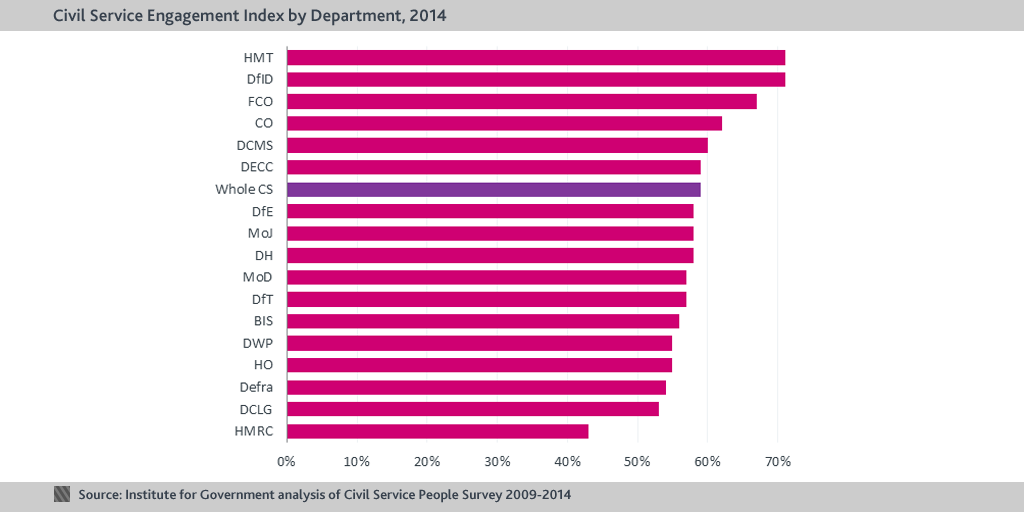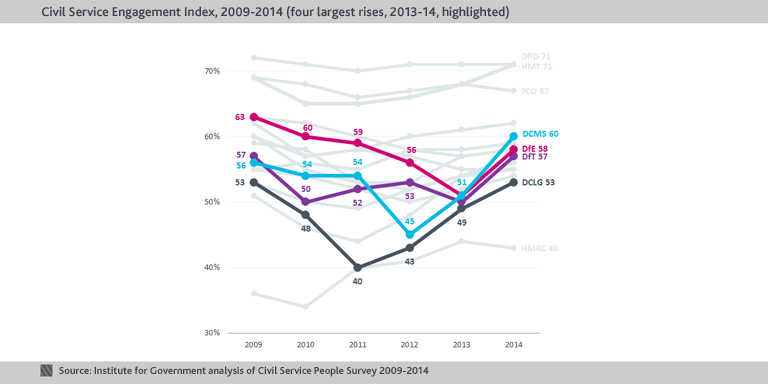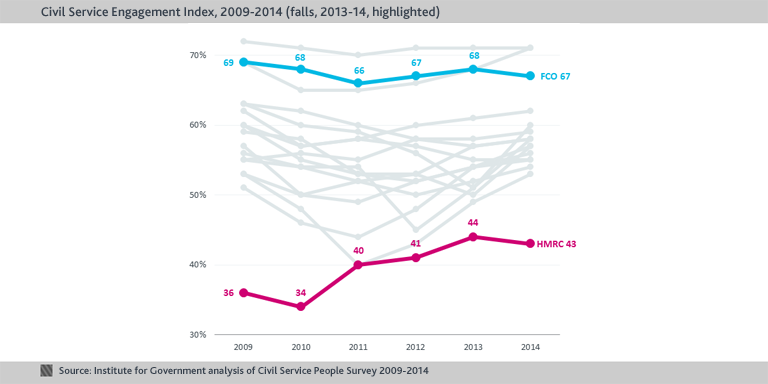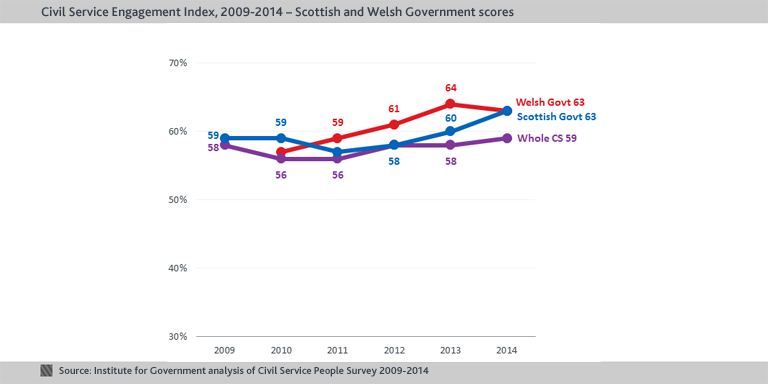Civil Service Engagement Index 2014: Most Departments Improve
We take a look at the full results.
We recently analysed the top level results from the 2014 Civil Service People Survey, which asked civil servants more than 70 questions about what they think of their jobs and the government organisations they work for. We now have the full results for each of 101 organisations, including government departments and the Scottish and Welsh Governments. Petr Bouchal and Gavin Freeguard examine the results on civil service engagement.
DfID and the Treasury have the highest engagement score – 71% – while HMRC has the lowest – 43%. 



- Topic
- Civil service
- Keywords
- Civil servants Austerity
- Administration
- Cameron-Clegg coalition government
- Publisher
- Institute for Government